If you’ve decided to visit Rabat then you’re probably wondering what to do in Rabat. I often wondered the same thing but after visiting a few times now and having several good friends who live there I realized we hadn’t spent enough time to see it all! I’ve chosen just twelve must-see Rabat attractions here to consider but there are many others that I had to leave off for space.
18 Things to do in Rabat
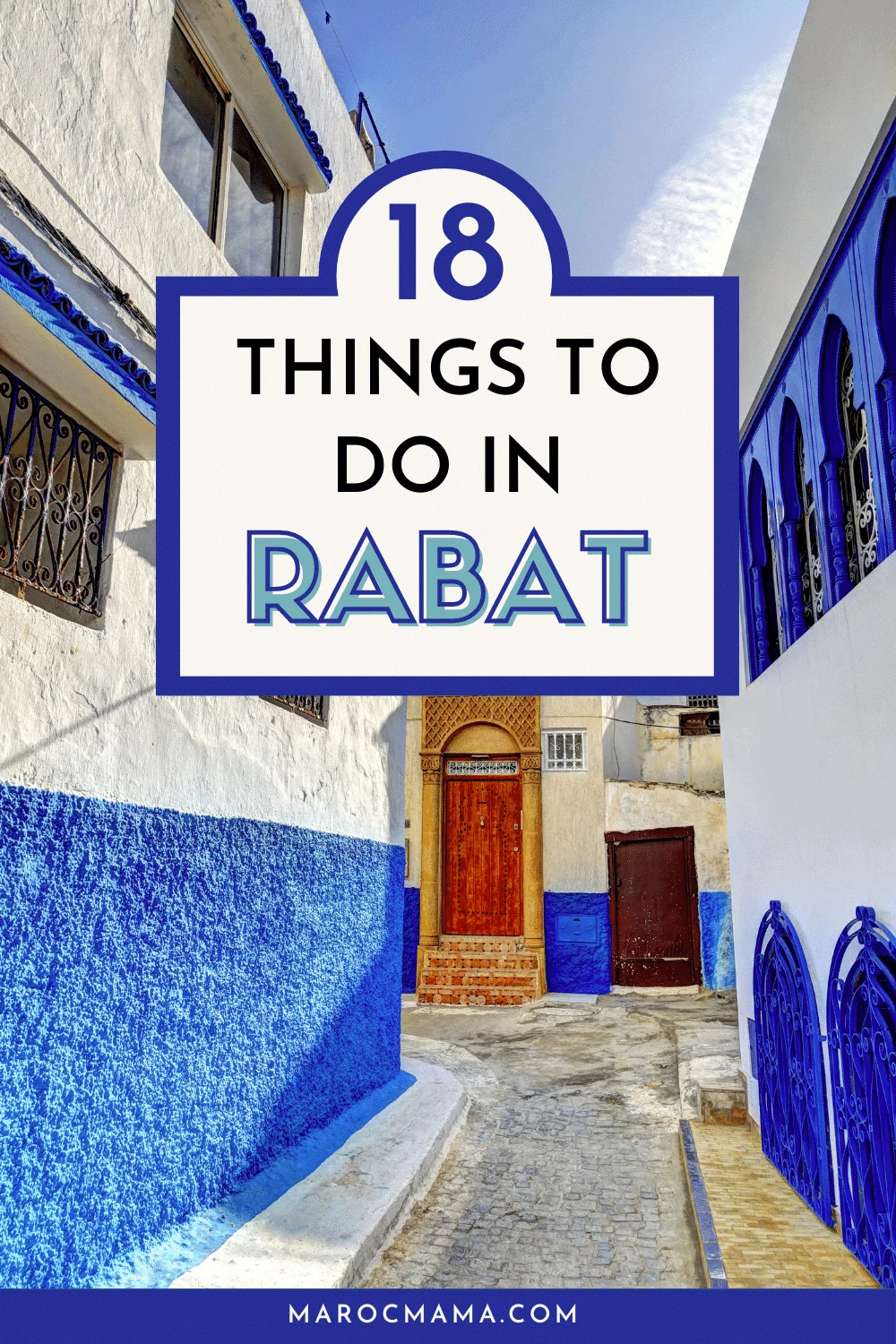
The Medina of Rabat
The medina and kasbah of Rabat are two different areas but connected. While much of Rabat is extremely modern, home to embassies and important government business, the medina still has reminders of a different kind of life. The medina here isn’t like the medinas of Marrakech or Fez, it’s much smaller and you’ll likely see very few tourists. One special item to consider seeking out is a Rabati rug.
The most typical style is a red rug, with a rectangle pattern. The red is inlaid in the middle with a geometric design. There is also a border of another color(s). These rugs look much more like a Turkish or Persian rug than the more abstract rugs of the mountain tribes. My guide to rug buying in Marrakech, while a different city, may prove useful.
Tour Hassan + Mohammed V Mausoleum
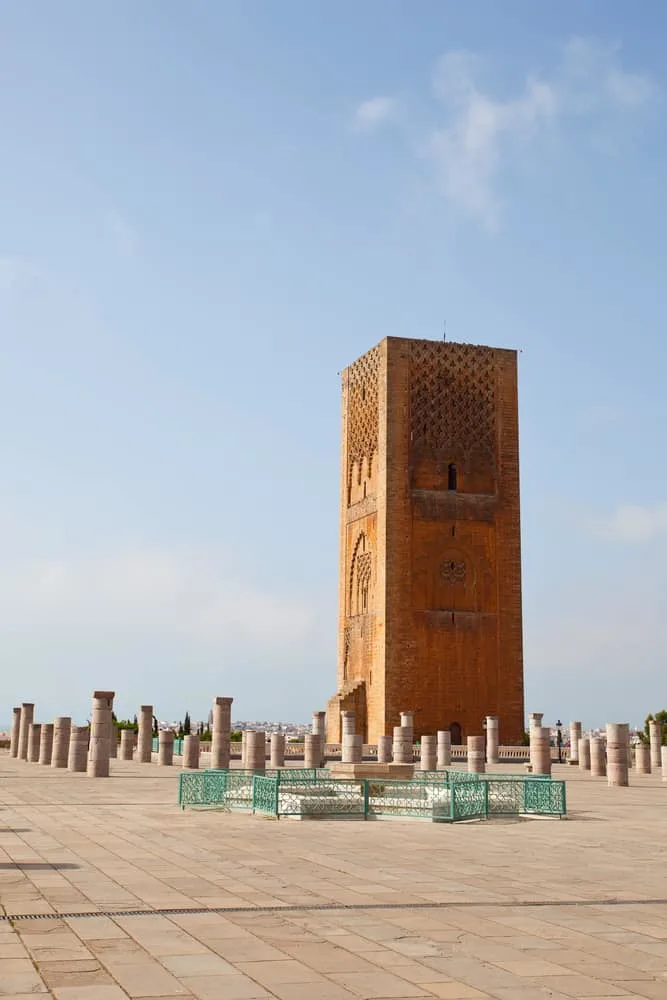
At the time in the 12th century, the ‘Tour Hassan’ Or ‘Tower of Hassan’ was intended to be finished as the tallest minaret and mosque in the world, ordered by the Great Sultan of Mansour. Unfortunately, the Sultan died suddenly in 1199 and all construction was immediately halted. In 2012 these ruins were granted UNESCO world heritage status.
The two structures remain the most popular sites for visiting tourists in Rabat. Guarded by elaborately dressed guards on horses, the spectacular minaret on one side is a beautiful, peaceful spot for a quiet picnic (granted there’s no grass) or a tranquil meditation.
Across the open space is the mausoleum; built after the death of Mohammed V, Morocco’s first post-independence king in 1961. Hassan II and his brother Prince Abdallah are also entombed here. The building is a magnificent homage to the 17th century Alaouite Dynasty architecture.
This is a treat for Westerns as typically, holy sites are closed to non-Muslims. However, the mausoleum welcomes all visitors inside and even into the small mosque next door, except on Fridays from 12-2 pm when the mosque is closed for midday prayers. Free entry to sites. Visitors are reminded this is a tomb and solemn place.
Do bring your sunblock, sunglasses and a hat, though, as there is very little shade in the area between the tower and the mausoleum.
Kasbah of the Udayas
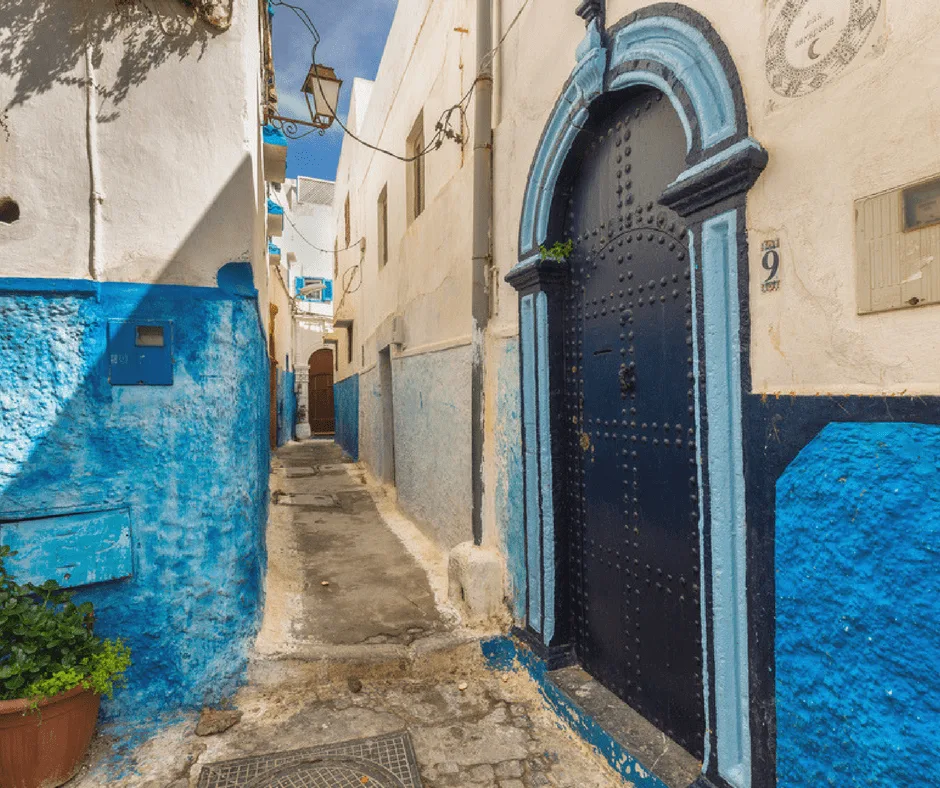
You’ve likely heard of Morocco’s famous blue city at this point (if you haven’t you can in this post), but did you know Rabat has it’s own mini-blue city?
Dating back to the 12th century, Rabat’s lovely kasbah (fort), perched at the mouth of the Bou ReGreg River is an impressive and unique structure and most certainly worth a stroll. Originally built to proudly ward off invaders and pirates, the kasbah is now the symbol of the uniquely Moroccan Oudeyas neighborhood.
Wander around the corner of the kasbah and you will see the massive, beautiful ancient door of the Oudeyas; this city within a city that is a must-see for true Moroccan flair. Spend the afternoon meandering around its cobblestone walkways, gaze at hundreds of picturesque blue doors, peek into the lovely Jardin Des Oudeyas (garden), or check out the artwork at the Musée Des Oudeyas (museum). Either way, don’t miss out on seeing this hip, authentic gem.
There is even a popular tea spot called Café Maure that has been essentially the same for centuries. Café Maure specializes in delicious Moroccan pastries, mint tea, and coffee; the famous spot is adjacent to the gardens and it has a lovely overlook to the water. And speaking of the overlook, make sure you make it to the overlook of the Oudeyas, as it’s a sight to see in the summertime with all its hundreds of colored umbrellas onto the beach below.
Rue De Consuls, The Medina
Smaller and more intimate than most other cities but much more relaxed and stress-free is the Rabat medina. Starting at the Rue De Consuls across from the impressive 14th century Portuguese-built Kasbah and the lovely Oudeyas, you will find anything and everything from rugs to poufs to ceramics to wooden delights.
The street is named in honor of the 19th-century diplomats who lived above and it’s a perfect spot for a photo with colorful doors peppered along the small pathway.
One of our favorite shops is Iazra Leather, which is more or less hidden at the top of the Impasse du Consulat de France-look out for the black wrought-iron door and ring the bell if the door is closed. Saiid, who speaks English, will happily help you. It’s also right at the corner where there is a lovely (dry) mosaic fountain; a lovely photo possibility. This is the place for excellent quality leather and suede goods-particularly brightly colored, whimsical handbags and wallets. And no smell!
Prices are very reasonable for the excellent quality of the merchandise. Or pop into Ayoub’s family shop, Boutique Japonais, just around the corner to the left. Although it has an odd name (there is nothing Japanese in the shop!) it’s an institution, so to speak, in the medina, that Ayoub and his brother Rachid’s father opened years ago. The family still works there today. You can’t miss Ayoub as he’s always wearing a black fedora. He also speaks English.
At the top of Rue de Consuls next to the police station and across from the lovely kasbah, you will find Coopéerative Artisanale des Tisserands de Rabat; a colorful co-op that sells blankets, towels and bed covers in various materials. Certainly worth a trip inside as the quality of selection and prices are excellent.
All the way at the end of the Rue De Consuls where the main street branches off to the right and the newly covered ‘Rue de Babouches’ (shoe alley), you will find Maison D’Argent, where you can find nice Moroccan silver jewelry for decent prices. The shop is somewhat easy to find as there are two brass lion statues sitting in front. Do ask take a peek in the typically closed room off to the right of the Maison D’Argent as it’s filled with antique Moroccan jewelry and resembles a fascinating museum.
Lastly, we love the business of Dar D’Art Ceramics, run by friendly brothers Mohammed and Jawad. The shop has a large supply of everything from ceramics (from all over Morocco) to Moroccan teapots, platters, and teacups. Their shop is nestled on the little side street near the old ‘Pharmacie’, awning, which is a good landmark and meeting place if you want to have a wander and perhaps your family or friends want to go somewhere else on the Rue De Consuls.
Complexe des Oulja
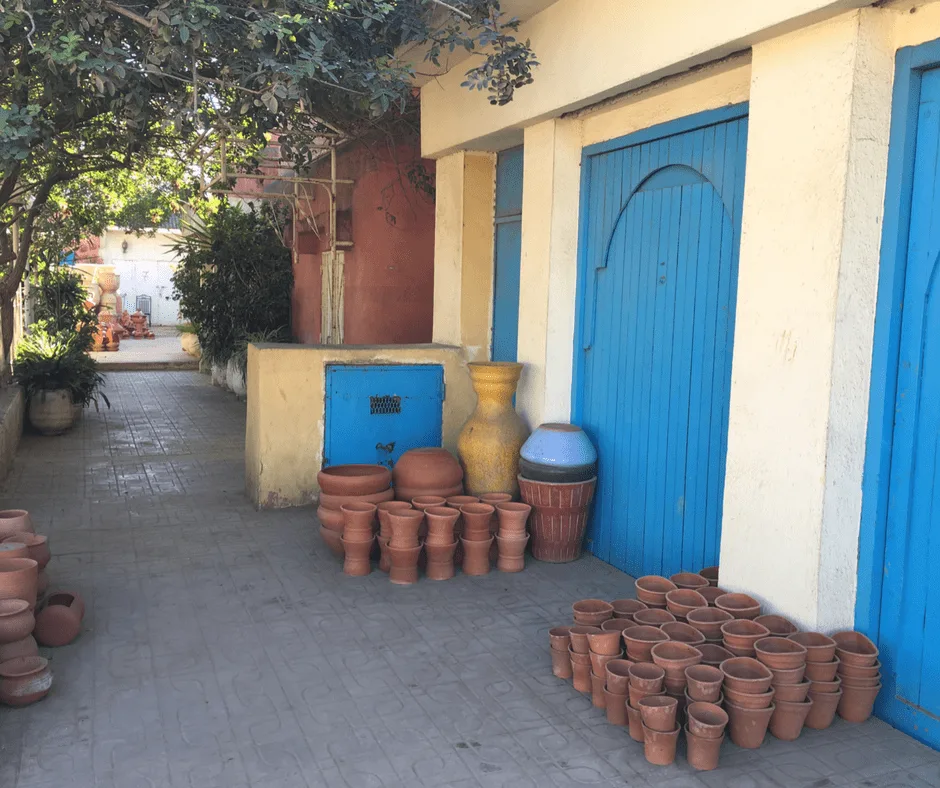
This might not be for everyone but for art lovers or anyone that is seeking out authentic craftsmanship you must visit. This was originally just potters however now there are many different types of workshops in the complex – and it is big! You’ll need a car (taxi) to reach this point even though it’s not far from Rabat and make sure the taxi waits for you because it’s very hard to find any going back.
This spot, also called Salé Pottery Center, might seem a bit blah from the main road, but trust us, you will love what you find inside the center. You will not likely see any tourists there, however, this is where locals shop for the best that Morocco has to offer: ceramics, hammered silver and brass lamps, bamboo, wooden furniture, rugs, colorful baskets, and of course, tagines. Plus more!
The center is just off the main road and is divided into two complexes that look quite unappealing from a distance, but again, drive inside and prepare to be delighted. The first complex has the best shopping to offer, it’s the furthest one away from Rabat center.
We love Saiid’s gorgeous, well-known pottery shop on the corner that sells unique non-glossy finished pottery in beautiful pastel colors. The tagine shop right next door to Saiid’s shop is also excellent and all of the tagines in the pottery center are certified non-lead. They sell decorative as well as cooking tagines.
Do note that the cooking ones are rust-colored, non-glazed. Pottery Slawi, closer to the large pots on the other side, is also a fabulous stop for ceramic gifts and the prices are incredibly reasonable here. Don’t forget rugs and lamps, Dar Al Assala, the massive shop run by Najib, has a gorgeous selection of hand-metaled lamps and upstairs, the rugs!
Prices are much less than in the touristy areas of any medina in Morocco. A visit here is fun to walk around but also ideal if you’re looking to buy a large set of pottery or looking for a wide variety of options. Also negotiate the prices!
Rabat Beaches to Relax On
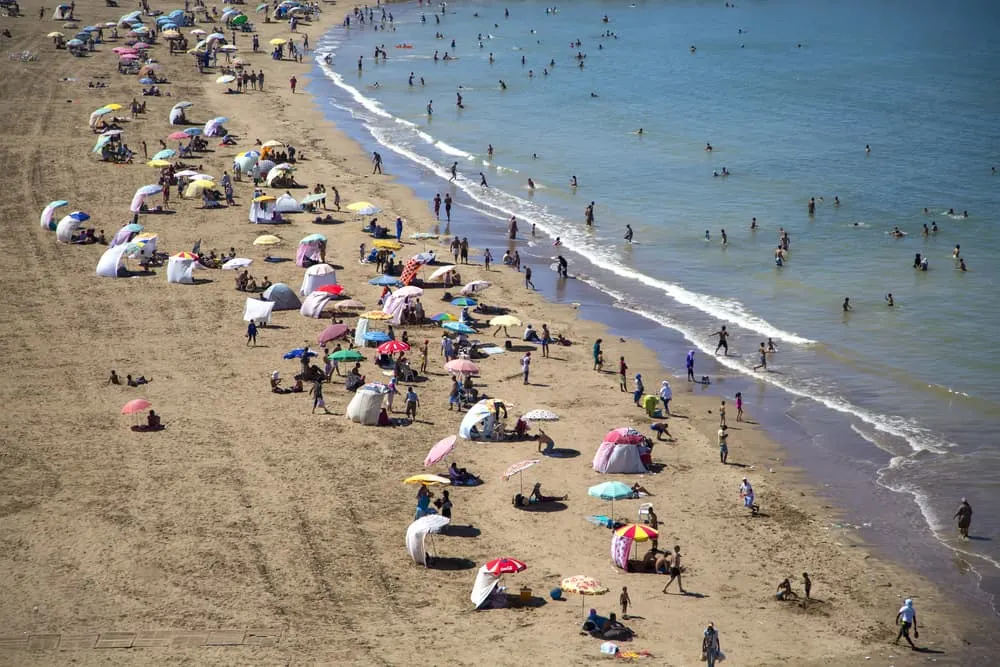
Yes, Rabat is on the Atlantic Ocean and it does have beaches! Temara and Skirat are two popular beach spots. If you’re a surfer and want waves that are a bit more of a challenge Plage des Nations is the place to go. Don’t expect spotless white sand beaches and know that most Moroccans wouldn’t think of touching the water until the warmer months of summer. This is also when the beaches are more well kept and maintained.
Mohamed VI Museum of Modern and Contemporary Art
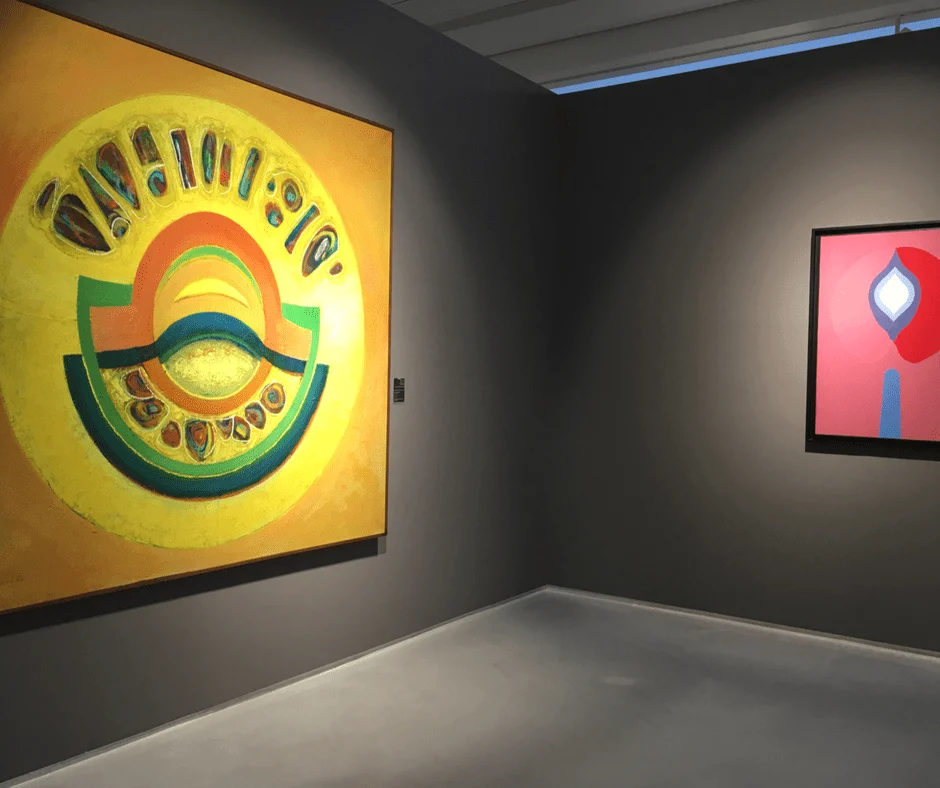
I have had visiting this museum on my list since the museum opened and was only a little apprehensive as other museums in Morocco are a bit of a let down. Not here. I would say visiting here is a must because it puts a completely different light on Morocco and Moroccan art.
The building itself is beautiful and the entire exhibit on par with art museums in the rest of the world. The one downside is that the placards are all in Arabic or French so it may be difficult to get the background of the pieces. They also have rotating visiting exhibits that have included Picasso and Goya most recently.
The pleasant museum café is also a nice respite from the hustle and bustle of the busy Hassan neighborhood. Don’t miss the newly painted Jidar Street Festival ‘Toiles De Rue’ two murals on the outside walls of the museum.
The museum is open from 10 am-6 pm, closed Tuesdays, entry 10-40 dh
National Zoo of Morocco – Rabat
If visiting with children you may want to visit the Rabat zoo. It isn’t as fancy or as well put together as larger zoos throughout the world but it will give you the chance to see animals native to Morocco and the greater African continent.
City of Salé
Just across the Bou Regreg River from Rabat lies Salé; another interesting and often forgotten place. Salé’s fascinating history is deeply linked to a past with dreaded pirating over the span of five centuries since the early 1600s. The city was a haven for the famous pirates known as ‘Salée Rovers’ who ruled the Mediterranean Sea and the Atlantic Ocean.
In Salé, you will find your a true Moroccan experience, from the working class medina to the tiny blue boats that ferry people across the river from Rabat (close to the kasbah in Rabat and in front of the marina in Salé) for just a few dirhams per person.
Speaking of the marina, this newly constructed project is a delight for meandering along the water and grabbing lunch at one of the many choices of restaurants and cafés dotted along the picturesque wharf. We recommend calling the Association Rabat Salé at 0530303030 for a walking tour of Salé.
Sale, Medina
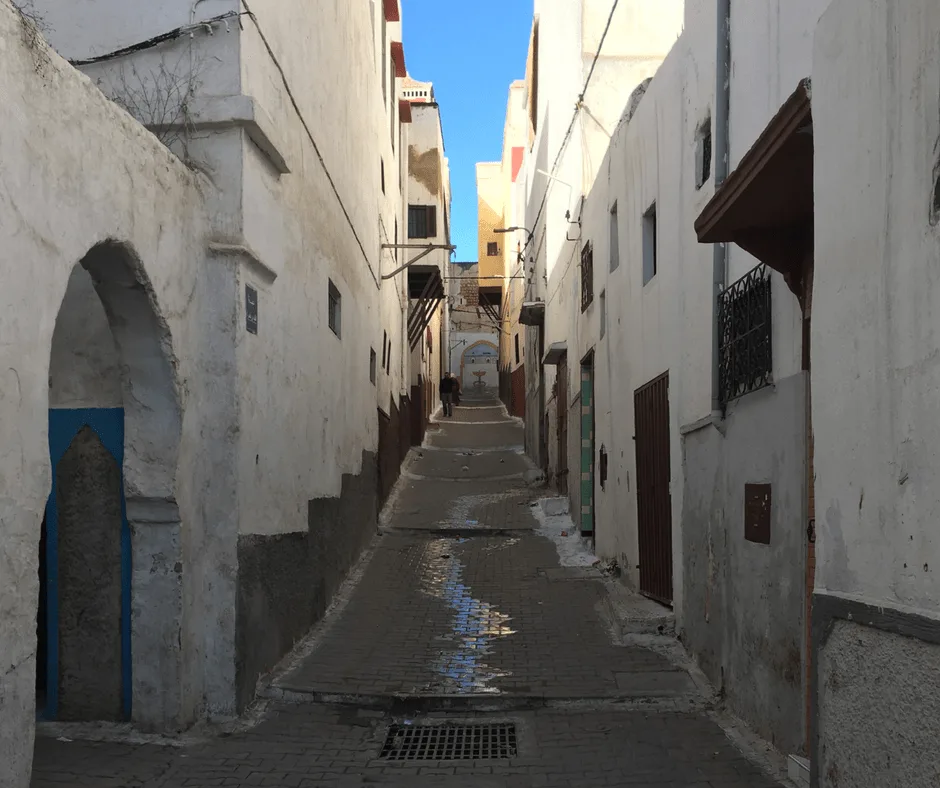
This medina isn’t as fancy as Marrakech or even Rabat but it’s a very authentic medina experience. This is a medina of the working class, it’s not glossed up for tourists and most people you’ll see are those going about their daily chores. If you do want to do some shopping you’ll find prices in Sale more reasonable than most cities, even nearby Rabat.
Great Mosque of Sale
This impressive mosque was built in the 12th century and is the third-largest in Morocco. It has been destroyed and rebuilt many times since its original construction. One of the most recent times was in 1851 when Sale was bombarded by French forces causing great damage to the mosque.
Not only was and is it a religious monument but it was a gathering point for the Moroccan nationalist movement in the 1930’s in their plans to remove the French protectorate from power. Non-Muslim visitors are not permitted interior access but can view it externally.
The Pirate Slave Prison
I had no idea this even existed until our hosts at Repose Riad pointed it out on a map of Sale. On Avenue Sidi Ben Achir against the city walls are the remains. Rumor is that they are currently undergoing renovations and it’s a bit of a needle in a haystack to find. There is a guardian who will give you a tour if you catch him nearby for about 20 dirham.
Unique Things to Do in Rabat
When you want to go a step beyond the tried and true spots most people see in Rabat, here are a few of the more unique things that you can visit.
Chellah
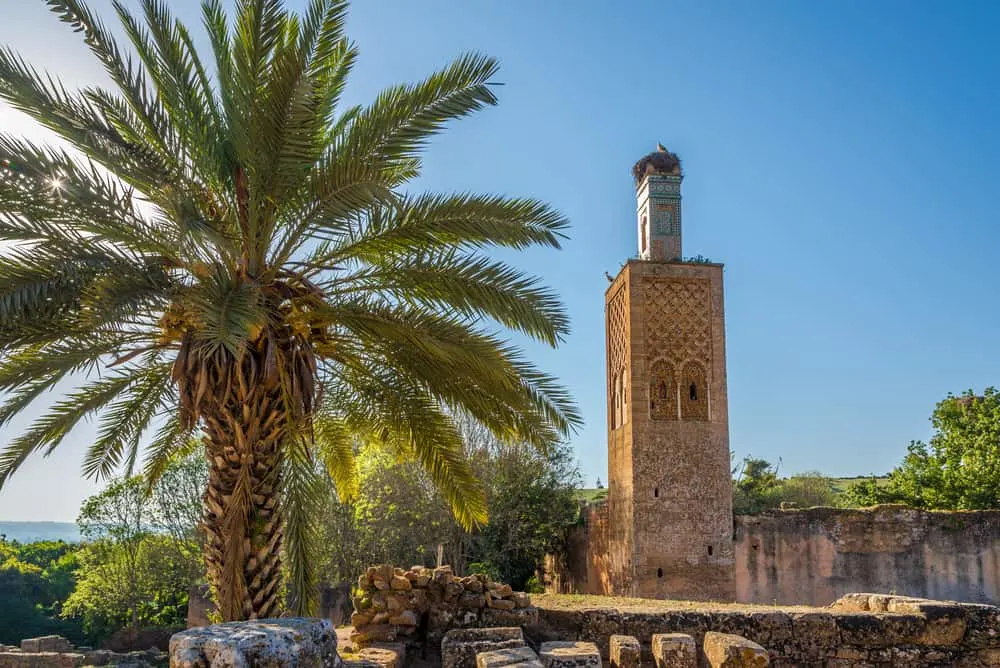
Nestled overlooking the lush Bou Regreg River on the Rabat city side is Chellah, an incredibly picturesque fort that dates back to the Phoenician times in the third century B.C. The Romans came next around 40 CE and finally the Arabs in the 12th century. Later the Berber rulers the Almohads used the complex as a royal burial ground.
The site has impressive columns and marble statues, albeit some of them in ruins, from the Roman era as well as all three empires. It is also the best spot for spotting the famous storks that nest above the tallest structures and trees and migrate to Morocco in the winter. Be sure to listen for their famous ‘clapping noise’! Chellah is an ideal spot for a picnic on the grass and a stroll amongst history.
In 1755, the earthquake that shook Lisbon made its impact here as well causing a lot of damage. Today, it’s very easy to visit the ruins and walk around.
The Chellah is fabulous for all of the photo ops; including the lovely (shaded) Andalucian-inspired garden. Grab an English-speaking guide (you will have to haggle) for 100-150 dh; they hang out at the front entrance.
Chellah is also the site of many music and cultural concerts and presentations throughout the year, including the famed International Chellah Jazz Festival every September. Bring sunblock as the ruins have little shade. The entry fee is 70 dh.
The Mawazine Festival

Every year the government of Morocco hosts Mawazine, a giant music festival bringing some of the biggest names in national and international music to Rabat to preform. Millions of people attend and it is one of the largest music festivals in the world. Mariah Carey, Whitney Houston, Kanye West, and Jennifer Lopez are just a few of the major names that have appeared on Mawazine stages.
There are both free and ticketed concerts; the hope in doing this is to provide entertainment to those of all economic backgrounds especially those who wouldn’t be able to afford normal high-priced tickets to such events.
Apia
If you are looking for excellent quality organic essential oils and cosmetics, look no further than the lovely co-op of Apia. With two locations in Rabat; one in Agdal and a newly opened second boutique in Soussi, Apia is your one-stop-shop for lovely gifts. The shops have everything from jams, olive oils, and honey to anything and everything cosmetic.
They even have jars of preserved lemons for making tagines at 25 dh a pot. We absolutely love their clay facial mask with rose water in particular. Prices are reasonable for the quality products that Apia offers. Gift wrapping available. Parking at Apia Agdal is a bit complicated, but Apia Soussi has parking in front along the road. A perfect spot also to take your visitors who want treats to take home!
Jidar ‘Toiles De Rue’ Street Art Festival
Following the global street mural phenomenon, this unique festival, (which name means ‘canvas of the street’) takes place yearly for about 10 days during the month of April. Driving or walking around Rabat, you will see massive murals from the past few years on display; an eclectic, colorful showcase of modern and contemporary art.
The artists come from all over the world and this past April, the youngest was a Moroccan artist of just 23 years old. During the festival itself, the organizers create a map with a circuit of all the current murals being painted and you can drive around the city and meet the artists while they are painting.
It’s a fabulous initiative for kids to be inspired by the art that they see on the buildings and structures daily. It’s also the perfect change from the normal boring concrete buildings that are often found in major cities around the world, and particularly in more disadvantaged neighborhoods.
MegaMall
Grab a bite to eat at MegaMall and then lace up your skates as the mall has a decent ice skating rink that is popular with families and kids. If your children aren’t tired after a round on the ice, there is a ‘fun park’ as well as a children’s play area for energetic little ones.
The mall has a bowling alley, a food court, and of course, shopping. Although it’s not as big as the Morocco Mall in Casablanca, MegaMall certainly has its charm. We do recommend that you book earlier in the day for ice skating as well as bowling as both venues can get very busy in the afternoons and evenings.
Agdal Train Station
This might seem like an odd spot to highlight but the newly open Rabat Agdal train station is truly a sight to see. A massive, three-level state of the art structure with a bevy of food and shopping choices, this beautiful station is also where you can grab the equally-new TGV or ‘train à grande vitesse’ (bullet train) either south to Casablanca or north to Tangier. For those who need a taste of America, there is McDonald’s and Starbucks.
Kids will love the MiniSo Shop; a trendy Japanese boutique filled with quirky merchandise. There is even a Léonidas Belgian chocolate stand. FYI-there are two train stations in Rabat: Agdal and Centre Ville; so be sure to go to the right one.